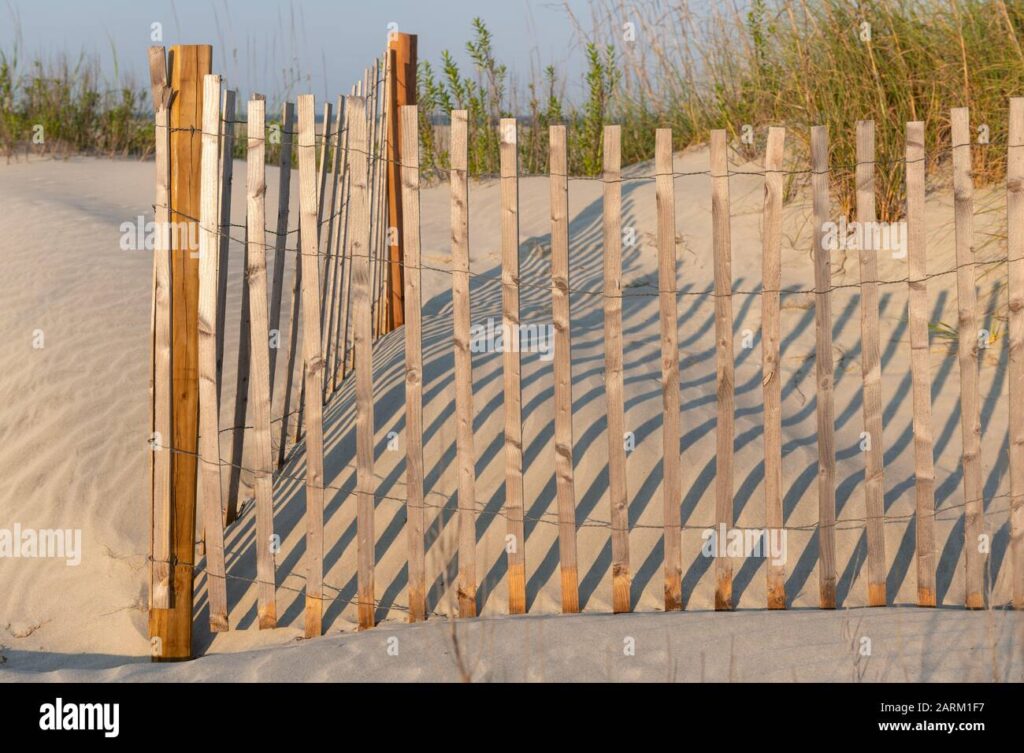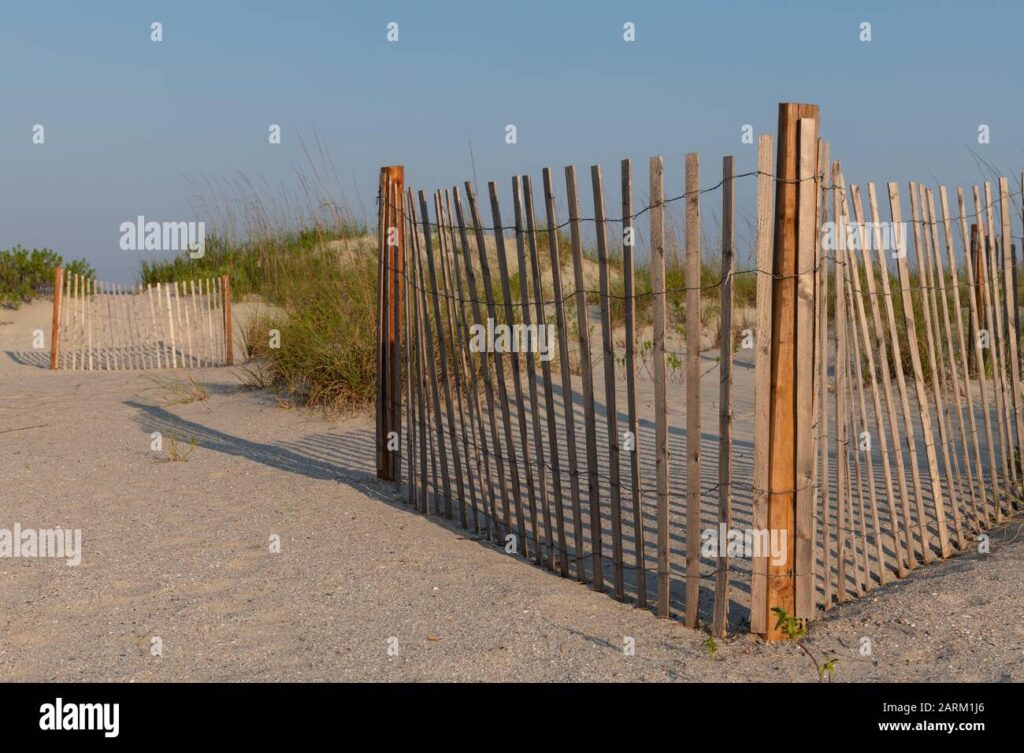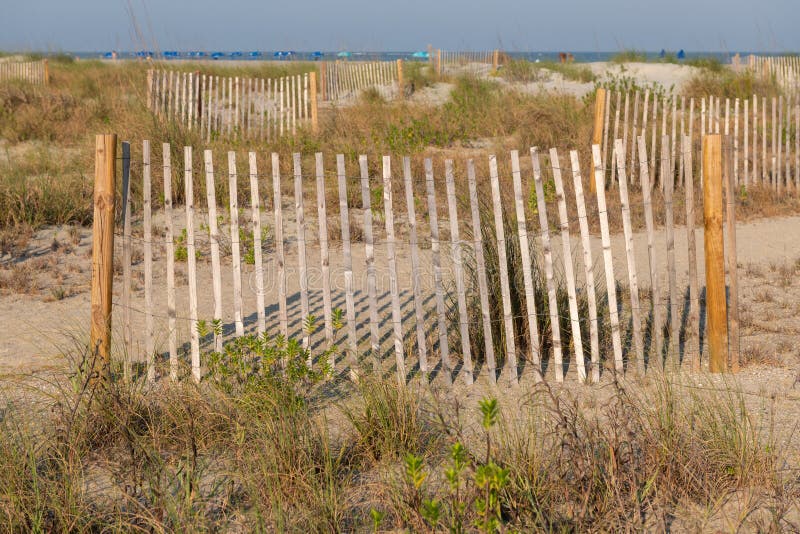Are you struggling to maintain your fence in a sandy environment? Well, don’t worry because I’ve got you covered! In this article, we’ll discuss some helpful tips and tricks on how to keep your fence in great shape even in sandy conditions. Whether you’re dealing with sandstorms or just regular sandy soil, I’ll provide you with valuable information that will help you maintain the look and functionality of your fence.
When it comes to maintaining your fence in sandy environments, there are a few key factors to consider. First and foremost, you’ll need to choose the right type of fence material. Some materials, such as vinyl or aluminum, are more resistant to the effects of sand compared to others like wood. We’ll dive into the pros and cons of each material and help you decide which one is best for you. Additionally, we’ll discuss how to properly clean and inspect your fence to prevent any damage caused by sand particles. So, if you’re curious about how to take care of your fence in sandy environments, keep reading because this article will provide you with all the information you need and more!
Maintaining Your Fence in Sandy Environments
If you live in a sandy environment, then you are likely aware of the challenges it presents when it comes to maintaining your fence. Sand can be abrasive and can cause damage to various materials, including wood, vinyl, chain link, and wrought iron. Additionally, the blowing sand can accumulate on your fence, making it lose its aesthetic appeal and potentially causing structural issues.
To help you keep your fence in pristine condition in sandy environments, we have put together a comprehensive guide that covers various aspects of fence maintenance. From choosing the right fence material to addressing fence damage and repairs, we will provide you with the necessary knowledge to maintain your fence effectively. So let’s dive in and explore the essential steps you need to take to ensure the longevity and durability of your fence in sandy environments.

Types of Fences
Before we delve into the maintenance tips, let’s begin by familiarizing ourselves with the different types of fences commonly used in residential areas.
Wooden Fences
Wooden fences are a popular choice due to their natural aesthetics and versatility in design. However, they are vulnerable to damage caused by sandy environments, such as rotting, warping, and discoloration.
Vinyl Fences
Vinyl fences offer excellent durability and require minimal maintenance. They are resistant to moisture, which makes them a suitable option for sandy environments. However, they can be prone to fading and cracking over time.
Chain Link Fences
Chain link fences are known for their affordability and durability. However, they may require regular cleaning and maintenance to prevent rust and other forms of damage caused by sandy conditions.
Wrought Iron Fences
Wrought iron fences are highly durable and provide a sophisticated look to any property. However, they can be susceptible to rusting and corrosion in sandy environments if not properly maintained.
Factors to Consider Before Installing a Fence
Before installing a fence in a sandy environment, there are several factors you should consider to ensure its longevity and effectiveness. Let’s take a look at these factors:
Property Size and Layout
Consider the size of your property and its layout when selecting a fence. Take into account any landscape features, such as slopes or trees, that may affect the installation process and the overall effectiveness of the fence.
Purpose of the Fence
Determine the primary purpose of your fence, whether it is for privacy, security, aesthetics, or a combination of these factors. This will help you choose the right fence material and design that suits your needs.
Budget
Set a budget for your fence installation project. Different fence materials vary in terms of cost, so it’s essential to select a material that fits within your budget while still meeting your requirements.
Maintenance Requirements
Consider the maintenance requirements of different fence materials. Some materials may require regular cleaning, painting, or sealing to maintain their integrity in sandy environments. Factor in the time and effort you are willing to invest in maintaining your fence.

Choosing the Right Fence Material
Selecting the right fence material is crucial in sandy environments. Here are some factors to consider when making your decision:
Durability and Lifespan
Opt for materials that are highly durable and have a long lifespan. As sandy environments can accelerate wear and tear, choosing a sturdy material will ensure your fence withstands the harsh conditions.
Aesthetic Appeal
Consider the aesthetic appeal of the fence material. Choose a material that complements the style and design of your property while withstanding the sandy environment.
Resistance to Sandy Environments
Look for materials that are specifically resistant to sandy environments. Some materials may be more prone to damage from sand abrasion or accumulation, while others are designed to withstand these conditions.
Cost
Evaluate the cost of the fence material, including installation and maintenance expenses. Balancing cost with durability and resistance to sandy environments will help you make an informed decision.
Preparing Your Fence Site
Properly preparing your fence site is crucial for a successful installation and long-lasting fence. Follow these steps to ensure a well-prepared site:
Clearing Vegetation
Clear the area of any vegetation or obstructions that may interfere with the fence installation process. This step will also allow for proper inspection of the site and ensure accurate measurements.
Measuring and Marking the Perimeter
Measure and mark the perimeter where you intend to install the fence. Use a measuring tape and stakes to clearly define the boundaries and ensure accurate placement.
Checking for Underground Utilities
Before digging post holes, make sure to check for any underground utilities such as water pipes, gas lines, or electrical cables. Contact your local utility company to schedule a utility locate service if needed.
Obtaining Necessary Permits
Check with your local building or zoning department to determine if you need any permits before installing your fence. Failure to obtain the required permits may result in fines or the need to remove and reinstall the fence.

Installing Fence Posts
Proper installation of fence posts is crucial for the stability and overall effectiveness of your fence. Follow these steps:
Digging Post Holes
Dig post holes using a post hole digger or an auger. The depth and diameter of the holes will depend on the type of fence and the soil conditions in your area. Generally, aim for a depth of at least one-third the height of the fence.
Setting Post Depth and Spacing
Set the posts at the desired depth, ensuring they are plumb and level. Leave appropriate spacing between each post, based on the design and purpose of your fence. Use a string line to ensure consistent alignment.
Using Proper Post Anchoring Techniques
Choose an appropriate post anchoring technique based on the fence material and soil conditions. This may involve using concrete, gravel, or specialized ground anchors to secure the posts in place.
Ensuring Post Stability
Check the stability of each post before proceeding with panel installation. Wiggle the posts gently to ensure they are firmly set in the ground. Make any necessary adjustments to ensure stability.
Securing Fence Panels
Attaching the fence panels correctly is essential for both appearance and functionality. Follow these steps to secure your fence panels effectively:
Attaching Panels to Posts
Use appropriate fasteners, such as screws or nails, to attach the fence panels to the posts. Ensure the panels are aligned properly and level with the ground.
Proper Alignment and Leveling
Check the alignment and levelness of each panel as you install them. A misaligned or uneven fence can affect its overall appearance and structural integrity.
Using the Correct Fasteners
Select fasteners that are suitable for your fence material and climate conditions. Stainless steel or galvanized fasteners are often recommended for sandy environments due to their corrosion resistance.
Adding Reinforcements for Windy Areas
If you live in an area prone to high winds, consider adding reinforcements to your fence panels. This may involve installing additional bracing or using stronger materials to prevent damage during storms.

Applying Protective Finishes
Protective finishes can significantly extend the lifespan of your fence and enhance its appearance. Consider these options:
Priming and Painting
For wooden fences, priming and painting provide an effective protective barrier against the sand. Use quality exterior paints and primers to prevent moisture damage and maintain the color vibrancy of your fence.
Staining and Sealing
Staining and sealing are suitable options for both wooden and vinyl fences. They provide a protective layer against the abrasive effects of sand while enhancing the natural beauty of wood or preserving the color of vinyl.
Protective Coatings for Specific Materials
Certain fence materials, such as wrought iron or aluminum, may benefit from specialized protective coatings. These coatings can prevent rust, corrosion, and fading caused by sandy environments.
Regular Maintenance Tips
Regularly inspect your fence for any signs of peeling paint, cracks, or other damage. Address any issues promptly to prevent further damage. Clean your fence periodically to remove accumulated sand or debris.
Addressing Fence Damage and Repairs
Damage to your fence can occur in sandy environments due to weather conditions, shifting soil, or accidental impact. Here are some common fence issues and how to address them:
Identifying Common Fence Issues
Inspect your fence regularly to identify common issues such as rotting, warping, loose panels, rust, or broken parts. Addressing these issues early on will prevent further damage and costly repairs.
Repairing or Replacing Damaged Materials
Repair or replace damaged materials promptly to prevent further deterioration. Use matching materials and follow proper repair techniques to ensure a seamless look and structural integrity.
Adjusting for Ground Shifts
Sandy environments can experience ground shifts due to weather conditions, erosion, or soil settling. Regularly check the alignment and stability of your fence, and make necessary adjustments to accommodate any ground shifts.
Dealing with Pest Infestations
Sandy environments can attract pests such as termites, ants, or rodents that may damage your fence. Take appropriate measures to address pest infestations promptly, such as treating the affected areas or contacting pest control professionals.

Storm Preparation and Maintenance
Storms can pose a significant threat to fences, especially in sandy environments. Take the following measures to prepare and maintain your fence during storms:
Trimming Overhanging Trees and Branches
Trim any overhanging trees or branches that may pose a risk to your fence during storms. Falling branches can cause extensive damage to the fence and compromise its structural integrity.
Securing Loose Sections
Inspect your fence for any loose sections or gaps, especially after a storm. Secure these areas promptly to prevent further damage or entry of debris.
Inspecting and Reinforcing Post Anchoring
Check the stability of your fence posts after each storm. Reinforce the post anchoring if necessary to ensure the fence remains upright and secure.
Draining and Waterproofing
Ensure proper drainage around your fence to prevent water accumulation that can weaken the soil and compromise the foundation. Consider applying a waterproofing sealant to protect the fence material from water damage.
Maintaining Gate Functionality
Gates are an integral part of fence systems, and their functionality is crucial for ease of access and security. Follow these maintenance tips to ensure your gate operates smoothly:
Lubricating Hinges and Latches
Regularly lubricate the hinges and latches of your gate to prevent rust and ensure smooth operation. Use a suitable lubricant recommended for outdoor use.
Adjusting Gate Alignment
Check the alignment of your gate periodically to ensure it closes and latches properly. Make any necessary adjustments to correct any misalignment.
Replacing Worn-out Hardware
Inspect the hardware of your gate, such as hinges, bolts, and handles. Replace worn-out or damaged hardware promptly to prevent gate malfunctions or security risks.
Troubleshooting Common Gate Issues
Address common gate issues such as sagging, sticking, or uneven closing by adjusting hinges, tightening hardware, or replacing damaged components. Seek professional help if needed.
Landscaping and Fencing
Integrating your fence into your landscaping can enhance the overall aesthetics and functionality of your outdoor space. Consider the following landscaping tips when installing and maintaining your fence:
Choosing Plants that Thrive in Sandy Environments
Select plants that are well-suited to sandy environments to minimize the impact on your fence. Drought-tolerant plants that can withstand sandy soil and wind can complement the fence and provide additional privacy and beauty.
Creating a Buffer Zone
Create a buffer zone between your fence and sandy areas to prevent sand from accumulating directly on the fence. This can be achieved through the strategic placement of rocks, gravel, or plants.
Avoiding Plant-Fence Interaction Problems
When planting near your fence, consider the growth habits and potential interaction with the fence. Avoid planting species with aggressive root systems that can damage the fence or hinder maintenance efforts.
Incorporating Fence into Landscape Design
Use your fence as a design element in your landscaping efforts. Paint or stain the fence in colors that complement your overall landscape theme. Additionally, consider adding decorative elements such as climbing vines or trellises to enhance the visual appeal.
Fence Staining and Coloring Options
Staining or coloring your fence can significantly enhance its appearance and protection against sandy environments. Consider the following options:
Natural Wood Stains
Choose natural wood stains that provide protection and preserve the natural beauty of the wood. These stains can also prevent fading, cracking, and discoloration caused by the sun and sand.
Colorful Alternatives for Vinyl Fences
If you have a vinyl fence, explore colorful alternatives to enhance its visual appeal. Consider incorporating different shades or patterns that complement your property and personal preferences.
Mixture and Application Techniques
Experiment with different mixture ratios and application techniques to achieve the desired color and finish. Apply multiple coats for added protection and longevity.
Pros and Cons of Different Coloring Methods
Compare the pros and cons of different coloring methods, such as staining, painting, or coloring agents. Consider factors such as durability, required maintenance, and the impact on the environment.
Enhancing Privacy and Security
Privacy and security are two essential considerations for homeowners. Explore the following options to enhance these aspects of your fence:
Privacy Fence Designs
Opt for fence designs that offer maximum privacy. This may include solid panels, latticework, or tall shrubs and trees strategically planted alongside the fence.
Adding Security Features
Consider adding security features to your fence, such as locked gates, motion sensor lights, or surveillance cameras. These features can provide an additional layer of protection against unauthorized access.
Fence Toppers and Extensions
Install fence toppers or extensions to increase the height of your fence for added privacy and security. Options range from lattice panels to pre-fabricated decorative toppers.
Intrusion Detection Systems
Advanced technology can be incorporated into your fence system to provide intrusion detection. Options include sensors, alarms, or even electrified fences for enhanced security in sandy environments.
Conclusion
Maintaining your fence in sandy environments requires careful consideration of various factors, from choosing the right material to addressing specific challenges that arise from sand abrasion and accumulation. By following the steps outlined in this guide, you can ensure the longevity, durability, and aesthetic appeal of your fence in sandy environments.
Remember to regularly inspect and maintain your fence, address any issues promptly, and implement appropriate protective measures. By doing so, you can enjoy a beautiful and functional fence that withstands the demands of sandy environments for years to come.
For more information and guidance on fence maintenance, repairs, and other related topics, visit our website FenceDude.org. We strive to provide reliable and valuable information to fence owners, addressing their concerns from all angles and offering solutions for a well-maintained and durable fence.